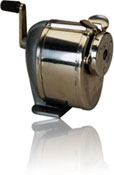| Metrics for Innovation Success | |
Choose Measures Consistent with Strategy
Strategy is one of the two most important drivers for NPD success. However, because the type of NPD projects which are undertaken are also an expression of the organization's strategic typology, innovation metrics will vary from firm-to-firm. Typical linkages between strategy and preferred metrics of successful innovation are discussed below.
In contrast to the Defender firm, the Prospector firm values being "first" to market, so its primary measure of success involves whether the products of today will  lead to future opportunities. In fact, the Prospector firm will introduce nearly six times as many "New-to-the-World" products as will a Defender firm (30% of portfolio vs. 5%). Measures for a Prospector firm will be consistent with changing product lines and early market entry. Innovation, also a high priority, may be tracked through metrics such as number of new patents issued over a period (quarter or year), as well as benchmarking patent portfolios with nearest competitors to ensure the Prospector firm is "winning" with the most new technologies. lead to future opportunities. In fact, the Prospector firm will introduce nearly six times as many "New-to-the-World" products as will a Defender firm (30% of portfolio vs. 5%). Measures for a Prospector firm will be consistent with changing product lines and early market entry. Innovation, also a high priority, may be tracked through metrics such as number of new patents issued over a period (quarter or year), as well as benchmarking patent portfolios with nearest competitors to ensure the Prospector firm is "winning" with the most new technologies.
|

|
|
|

For many, August brings plans to send the kids back to school and a new fiscal year at work. With these fresh starts, maybe it's time to look at how your New Product Development (NPD) teams are interacting. In this issue of The Village, we will look at the five Thomas-Kilman Conflict Management modes. Understanding these predominant reactions to confrontations can help your team work together more effectively for NPD success! |
|
Innovation Fun Fact | |
The History of Pencils
Honoring "Back-to-School", this month's Innovation Fun Fact is about the most elementary of school tools - the pencil!
In ancient Rome, scribes wrote on papyrus with a thin metal rod called a stylus. Other early styluses were made of lead, which is why today we still call the core of a pencil "lead".... even though it is made of non-toxic graphite.
Graphite came into widespread use after a deposit was found in England in 1564. At first sticks of graphite were wrapped in string. Later graphite was inserted into wooden sticks that had been hollowed out by hand, and the wood encased pencil was born! Mass produced pencils developed first in Nuremburg, Germany in 1662 and now are made in highly automated factories.
Today's average wooden pencil can help you write up to 45,000 words, but no word on how long the eraser lasts!
Click on the photo of the pencils in order to view a short video (approximately 3 minutes) on how pencils are manufactured today. |
| 5 Ways to NPD Team Harmony | |
How to Apply Conflict Management Styles
Today, we are looking in on a New Product Development (NPD) team meeting in Columbus, Ohio. We see a standard corporate meeting room: a whiteboard, blue fabric rolling chairs, a large table littered with papers and half-empty coffee cups, several buzzing and glowing laptop computers, and a small window with the blinds pulled shut so meeting participants can better view the endless PowerPoint slides projected on the screen opposite the window. " If I've said it once, I've said it a hundred times," growls Bob, the technical expert on the Project Team. " Getting the battery design RIGHT is most important. I could care less about your schedule and your trade shows the battery design RIGHT is most important. I could care less about your schedule and your trade shows," he barks as he leans back in his chair and shoots a menacing glance at Chantella, seated across the table.
Gary, scratches his head and wonders where the team is headed. Manuel offers a compromise and Tara, seated away from the table, looks down and avoids the confrontation altogether.
How do Bob, Gary, Chantella, Manuel, and Tara move forward on the new product?
Read more about (Approximately 12 minutes reading time.)
Register for a free one hour webinar on "Innovation Strategy Typologies" to be held Tuesday, 24 August 2010, 10 am CDT, by clicking here. |
|
Reccommended Reading |
| |
Fast Failure
Development costs are high. The number of products making it to market are few compared to the number of ideas in the pipeline. Failing fast is failing cheap.
We recommend two articles in Harvard Business Review.
"A More Rational Approach to New Product Development," by Eric Bonabeau, Neil Bodick, and Robert W. Armstrong (March 2008 issue) and "Why Bad Projects are Hard to Kill," by Isabelle Royer (February 2003 issue).
We also recommend a great webinar sponsored by IEEE on Conflict Mangement. Click here to view. |
|
|